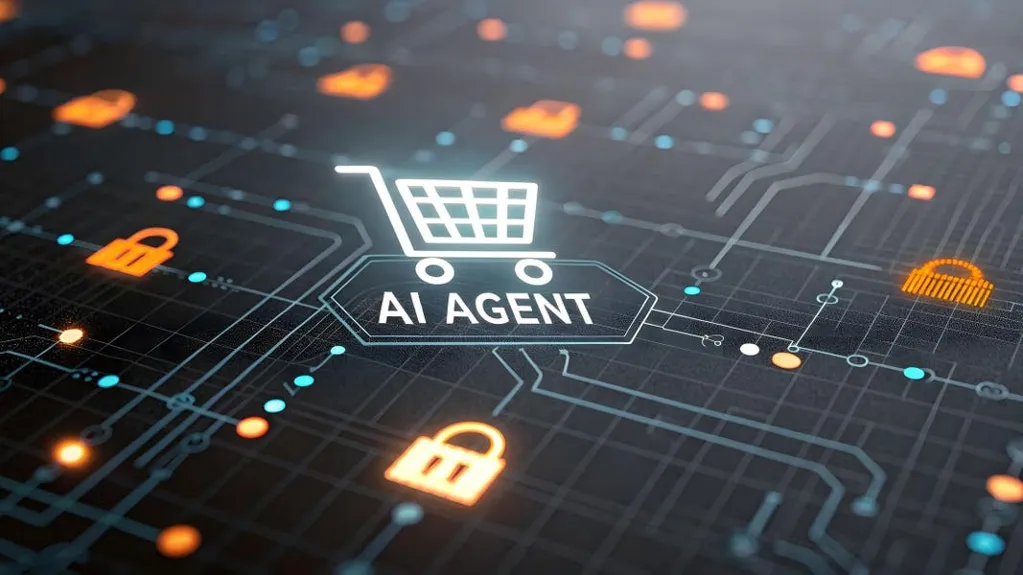Forbes contributors publish independent expert analyses and insights.
Marketers are used to adapting to change. The internet, social media, search engines, mobile devices, big data analytics and AI have all brought seismic-scale disruption.
But what if one of the fundamental assumptions in marketing, that our audience is human, is about to be shattered forever?
In the age of agentic AI, machines will increasingly make choices, including about what we buy. And brands that fail to react to this risk becoming "invisible" and, eventually, irrelevant.
Machines don't "shop" the same way we do. They don't browse influencer Instagrams, build brand loyalty due to happy memories, or impulse-buy on the back of clever copywriting. Instead, they analyze data based on logic, rules and signals.
With research papers like this one starting to delve into the mysteries of how and why agents make buying decisions, a picture is starting to emerge. And the indications are that brands may no longer be able to rely on time-tested social and psychological levers; from fulfilling lifestyle aspirations, to aligning with customer values, to human-centric visual branding.
So marketers are faced with the challenge of adapting once again to a new reality, where buying isn't driven by emotional response but by algorithms and robotic logic. Let's take a look at what this could mean.
Much of marketing is about building trust and connection with customers. This includes shaping our perception of brands to make them desirable and providing a great customer experience.
AI agents, the autonomous, action-taking evolutionary step forward from chatbots like ChatGPT, see things very differently.
According to Salesforce, nearly a quarter (24%) of consumers are comfortable with the idea of agents shopping for them. This rises to 32% when taking Gen Z in isolation.
Agents "see" products and services as structured data, price comparisons, feature lists, review scores and other machine-friendly information.
Yes, they can parse social media feeds for sentiment and brand associations. But at the end of the day, if the results of their data gathering don't fit into a table and show a recognized pattern, we can't be sure what insights an agent will draw from them.
To put that into a real-world scenario: A product category that people seem happy to trust AI to buy for them is household and domestic products.
If an AI is shopping for underarm deodorant, is it going to care about the millions that have been spent on developing a brand storyline and lifestyle positioning over the decades it’s been around?
The truth is, we don’t know for sure yet. No one is certain how agents, particularly those created in two or five years’ time, might buy things. However, there is some evidence that models available today, like OpenAI’s Operator, are drawn to ads with structured data.
Some tricky technical and psychological questions have to be addressed to get a fuller picture of what’s going on here. On the technical side, it will involve building a deeper understanding of how AI agents process and prioritize customer buying signals.
And we also need to understand how concepts like preference, values and trust will be communicated by the agents working on behalf of customers. Agents making buying decisions on behalf of humans are likely to operate within parameters which could include budget restrictions or ethical preferences.
While less-friendly fellow robots don’t feel pity, remorse, or fear, buying agents don’t feel greed, FOMO, or brand loyalty. On the other hand, they may react to bad customer experience differently than we would; they are unlikely to feel frustrated if a sales agent keeps them on hold for too long, for example.
It’s also worth noting that clever agents might even take steps to disguise their agentic nature. One example is the ability of agentic tools like Operator to communicate via human-to-machine channels like email, rather than APIs. Marketing automation systems may have to become adept at discerning whether a click or email has been sent by a person or a machine in order to react appropriately.
On the other hand, a great deal more commercial activity may be carried out exclusively machine-to-machine. This means marketers will need to understand how their own systems can successfully "win" negotiations with buying agents, convincing them they have what their users will need. Critically, this must be done transparently without impacting consumer trust.
Starting now and over the next 12 months, businesses will need to pay close attention to the impact of agentic search on their existing SEO and SEM strategies.
Google search took around 13 years to reach one billion users. ChatGPT is on course to hit that milestone within three.
Forward-thinking businesses should already be exploring this potentially efficient and dynamic new marketing channel. Both as a way of connecting with early-adopter audiences and of starting to build an awareness of its capabilities.
Beyond this, brands need to start thinking about ways that reputation and trust signals can be encoded into their messaging in ways that will capture the attention of machines.
This could mean structuring product information on a website into machine-readable formats, real-time data feeds (pricing and availability, for example), and providing extensive API access to product and services data.
Crucially, rising to this challenge will require collaborative action beyond just marketing teams. Data, product and digital teams will need to ensure that when agents check out a business, they get an aligned, on-message view.
This might not sound simple, and it’s likely to involve some serious strategic thought. But businesses that don’t start working on it now are likely to be left playing catch-up with the agentic early-adopters.
